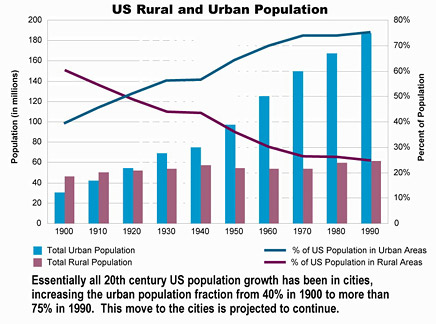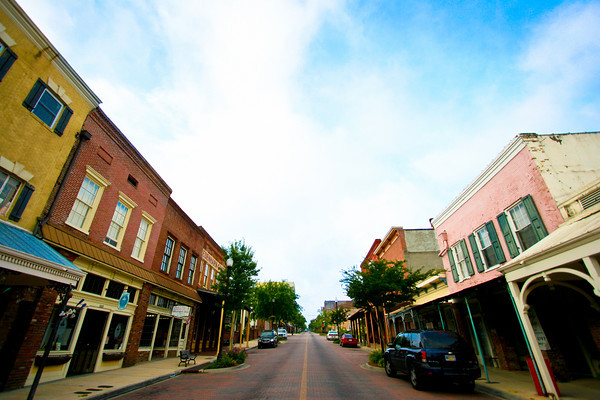Small towns are like snowflakes. From afar, they appear quite similar; but closer inspection reveals seemingly infinite intricacies . Even towns five miles apart can reveal dramatically different values and qualities of life, and the reasons for this have been explored by other, more informed folks for years.
In a country that tipped the urban/rural balance nearly a century ago and is increasingly urban, the future health of our rural places is obviously in danger. And impoverished small towns and counties typically demonstrate the highest rates of abandonment. Some urbanists might take this to the extreme. "If cities have everything," the thinking goes, "why doesn't everyone move to City X?"
In a country that tipped the urban/rural balance nearly a century ago and is increasingly urban, the future health of our rural places is obviously in danger. And impoverished small towns and counties typically demonstrate the highest rates of abandonment. Some urbanists might take this to the extreme. "If cities have everything," the thinking goes, "why doesn't everyone move to City X?"
At this risk of oversimplification, I can quickly identify two reasons why this is an absurd question:
- Moving costs money. Not everyone has the money to even rent a U-Haul or put down a deposit on a new place.
- Home matters. Leaving a town could represent an unwelcome rupture in a person or family's history.
Trends aside, I believe that the Southern small towns that are most successful over the next twenty years will do the following:
Other measures like chasing manufacturing could also help, but the returns on investment are uncertain. The above set of criteria could be achieved using existing networks and institutions (and surely is already happening in some places).
My primary concern is that towns may lack the wherewithal to accomplish this rapidly. Local leaders may not sense the urgency of the moment or agree with the approach I've laid out above. Check back in with me in twenty years.
[Find Greenfield Southeast on Facebook!]
- Operate with a hopeful, asset-based mindset. Towns are just like people. If you don't respect yourself, others will have difficulty respecting you. If you don't respect and advocate for your town, others won't either.
- Orient growth and action around traditional downtowns to emphasize revitalization and promote community openness. No town will be truly successful on the back of sprawl.
- Build a coalition of diverse civic leadership (government, faith, business, education) to ensure that local growth is healthy and equitable. Small towns must acknowledge their histories and ensure that major decisions are not made in lopsided ways that perpetuate an oppressive past.
- Connect with other nearby towns to build regional brands and pool assets. Unique town identities are obviously desirable, but squabbling over money and influence has played a major role in the present situation.
- Attract, coach, and retain high-quality leadership in major public institutions (incl. schools, health facilities, and government). Whether they grew up in your town or not, towns must attract quality talent that is compelled by helping grow a local future.
Other measures like chasing manufacturing could also help, but the returns on investment are uncertain. The above set of criteria could be achieved using existing networks and institutions (and surely is already happening in some places).
My primary concern is that towns may lack the wherewithal to accomplish this rapidly. Local leaders may not sense the urgency of the moment or agree with the approach I've laid out above. Check back in with me in twenty years.
[Find Greenfield Southeast on Facebook!]




 RSS Feed
RSS Feed
